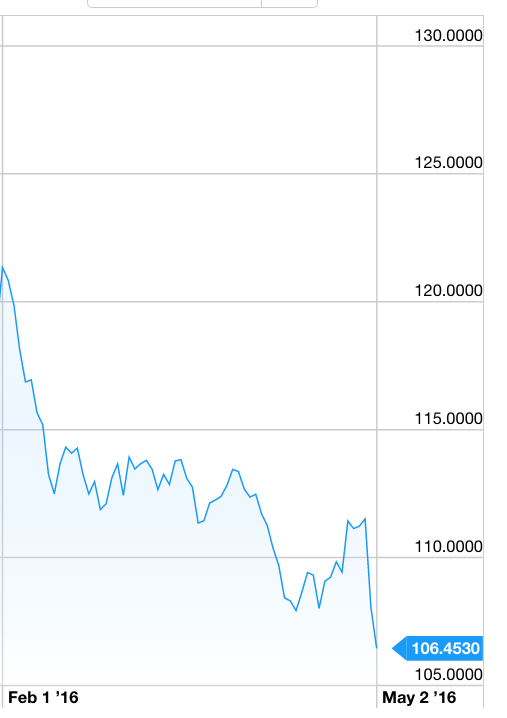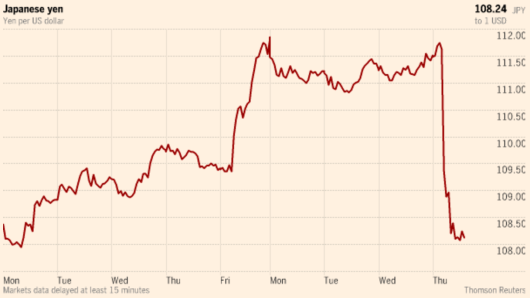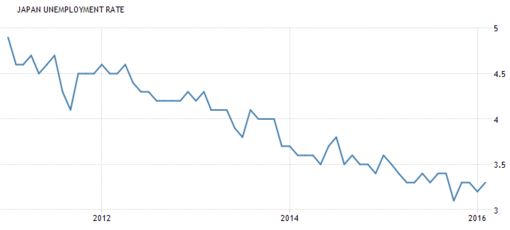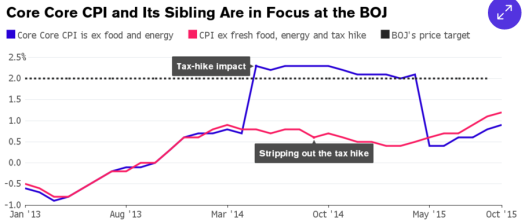Current account deficits don’t matter
There are many things that we teach our undergrads, which then get forgotten (or rejected, if I must be polite) by professional economists. The minimum wage costs jobs, low interest rates don’t mean easy money, trade with China benefits the US, monetary policy remains highly effective at zero rates, etc., etc. I taught all these ideas right out of the textbooks I used, because I believe them. And here’s one more: current account deficits are not a problem; they merely represent an imbalance between saving and investment in a particular region. If we abolished CA deficits for all regions, down to the individual level, we’d have to abolish banks. You want a house? Save up some money.
A recent report by the Peterson Institute at least avoids the worst sort of mistake:
In the latest chapter of the saga over countries that seek unfair trade advantages from currency manipulation, the US Treasury has released a new report aimed at curbing the practice. Treasury is correct not to indict any countries for “currency manipulation” at this time but also to create a “monitoring list” of five major countries—China, Germany, Japan, Korea, and Taiwan—that could become “manipulators” in the future and thus require close surveillance. The objective is to deter countries from returning to past practices of manipulation, and the new Treasury report should be quite helpful in that regard. . . .
However, Congress should not have focused on countries that have a bilateral trade surplus with the United States. All that matters for the impact of currency manipulation on the United States is the multilateral current account balance of the manipulators. In today’s world of distributed production, country X may buy materials from the United States, process and sell them to country Y, which then assembles the final goods for shipment to the United States. Country X would have a bilateral deficit with the United States and country Y a bilateral surplus, yet either or both might be guilty of currency manipulation that distorts the overall US current account balance and economy.
That’s half right, the bilateral surplus doesn’t matter, but neither does the multilateral surplus. There is no plausible harm that could come to the US from other countries running CA surpluses. There are some vulgar old Keynesian models that claim that high saving policies, which can as a side effect lead to CA surpluses, could hurt the US by reducing global AD. Paradox of thrift. I hope no reader of this blog takes those theories seriously. And as for the theory that current manipulation is a “beggar-thy-neighbor” policy, it is refuted every time an expansionary monetary policy move in Japan or Europe leads to a rise in global stock prices “despite” the accompanying currency depreciation.
We would underline the importance of Treasury’s decision to limit “allowable” current account surpluses to 3 percent of a country’s GDP. We at the Peterson Institute for International Economics have analyzed “fundamental equilibrium exchange rates” for years and have concluded that any imbalance above 3 percent of GDP, on either the surplus or deficit sides, is excessive and probably unsustainable; Treasury itself has often cited our estimates in its semiannual reports as authoritative. The staff of the International Monetary Fund has developed norms for current account positions that are even tougher, suggesting that both China and Japan should run no surpluses at all. There has been some discussion of defining a “material” (global) current account surplus at a higher level, perhaps 4 percent of GDP, and Treasury itself sought international agreement on such a norm at the G-20 meetings in Korea in 2010. Hence they are to be commended for concluding that “allowable” surpluses should not exceed 3 percent.
I find these proposals to be frightening, as they are based on a misunderstanding of basic international economics. CA surpluses should be welcomed, as they suggest the surplus country probably has sound fiscal policy, and is not engaged in the sort of ruinous debt run-up that led Greece and Italy and Portugal into their current mess. Most tax regimes strongly distort the saving/investment process, and hence even switching to a neutral treatment of saving and investment would often lead to a big CA surplus. The rest of the world should try to copy Germany and Singapore. We obviously won’t all end up with CA surpluses, but we’ll have more saving and investment, and hence faster economic growth. If the zero rate bound is a problem, then raise the inflation target high enough so that it doesn’t bind.
To see what’s wrong with the 3% proposal, let’s look at the eurozone, which currently runs a 2.8% CA surplus. That’s slightly under the proposed Peterson Institute limit, and hence not a problem. But what about individual eurozone members, should we look at their CA balances? Well, are they engaged in currency manipulation? At first glance it would appear the answer is no, they don’t even have their own currency to manipulate. It would be as crazy to complain about the CA surpluses of an individual eurozone member as it would be to complain about the CA surplus of Massachusetts, (which is not actually measured (AFAIK) but would probably be at German proportions if it were.)
And yet, the report does name Germany as a country to watch, probably because its CA surplus is 7.7% of GDP. But then why not pick on the Netherlands, at 9.7% of GDP? And why focus on individual eurozone countries, but not individual US states? Believe it or not, it’s no longer enough to stop all “currency manipulation”, the CA surplus opponents now want to stop the sensible countries from being sensible, they want them to start running up large budget deficits. After, all the recent Chinese case proves that this is not about currency manipulation. China is working hard to prevent the yuan from falling, despite their large CA surplus. Germany doesn’t even control their currency, and at the ECB they always push for a stronger euro.
It’s a myth that CA surpluses are some sort of “imbalance” that markets would correct if only governments would stop manipulating the currency. Is Massachusetts manipulating the US dollar? Indeed, without recent Chinese “manipulation”, the yuan would fall and their CA surplus would expand even further. To their credit, the smarter Keynesians understand that the CA surpluses actually reflect saving/investment differentials, and can only be attacked with government policies aimed at reducing that imbalance, i.e. with tax cuts and/or higher government spending.
But in that case, Massachusetts is just as guilty as the Germans or the Dutch. Maybe someone should put sanctions on Massachusetts’s products until my home state starts running a Puerto Rican-style fiscal policy.
In Australia they use Australian workers to build $400,000 condos on the beach, and then trade the condos to the Chinese in exchange for 400 HDTVs made by Chinese workers. If both sides agree to this transaction, what possible harm could it do? Can someone explain that to me? But in the world in international economics, there is something sinister about this voluntary exchange, as it leads to a $400,000 CA “deficit” for Australia, and a “surplus” for China. What does that even mean? In America we might trade the mortgages on homes built with American labor, for Chinese goods. Again, there is supposedly something sinister about this normal business transaction. I don’t get it.
Of course it could be worse, in the world of American politics the transaction would be described as China “raping” the US.
PS. Commenter HL suggested that Japan’s recent problems with an appreciating yen flow from the passage of this new law:
The latest step by Treasury was required by the Trade Enforcement and Trade Facilitation Act (the “customs bill”), which became law in February 2016.
I’m not sure if that’s true, but it’s interesting that Japan’s recent problems began in February. In fact, the BOJ needs to drive the yen far lower, and thus they should say “to hell with the US”. Unfortunately, they probably need to wait until mid-November to make that move. And even then, the Japanese are too polite. The others can ignore us, however. We can’t touch the Germans as they are in the EU. And China now has the world’s biggest economy; it’s too late to kick them around. If Trump’s elected he’ll find himself kissing Xi’s ring.
 PPS. Over at Econlog I have a new post discussing the recent moves in the yen.
PPS. Over at Econlog I have a new post discussing the recent moves in the yen.




